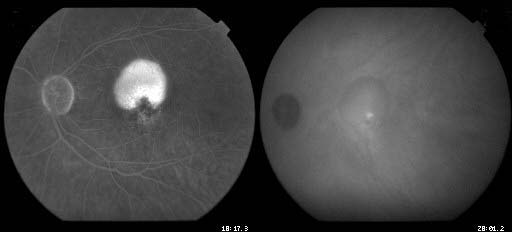|
|
 |
Digital Imaging
Introduction
Paul R. Montague, CRA FOPS
Department of Ophthalmology and Visual Sciences
The Univesity of Iowa Hospitals and Clinics
Iowa City, Iowa
In the second half of the 19th century, elaborate drawings sketched by skilled medical illustrators, artists, and ophthalmologists were required to record the appearance of disorders of the eye. With the advent of photography, a more precise method of documentation became available.

Optical artifact that was not resolved until the late 1960's.
Current developments in computer hardware, electronic cameras, and imaging software have stimulated further evolution toward imaging without film. Digital Imaging is a broad term applied to the recording of images electronically, conversion of those images into a set of numbers, storage of those numbers in a computer, and manipulation with computer programs. Since the images are represented as numeric data, they can be transmitted over phone lines, satellite, or computer networks. All of the photographs on the OPS web pages are in digital form.
This technology provides a wide variety of new and different techniques which have greatly expanded the horizons of ophthalmic photography. The highly sensitive electronic cameras can successfully record the very low infra-red light emissions of Indocyanine Green dye, making this adjunct to fluorescein angiography practical.

Fluorescein and Indocyanine Green images of the same patient.
Photographs by Kirby R. Miller
|
 |
|